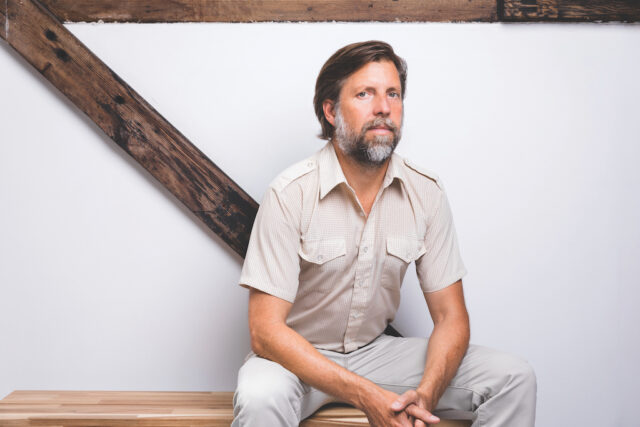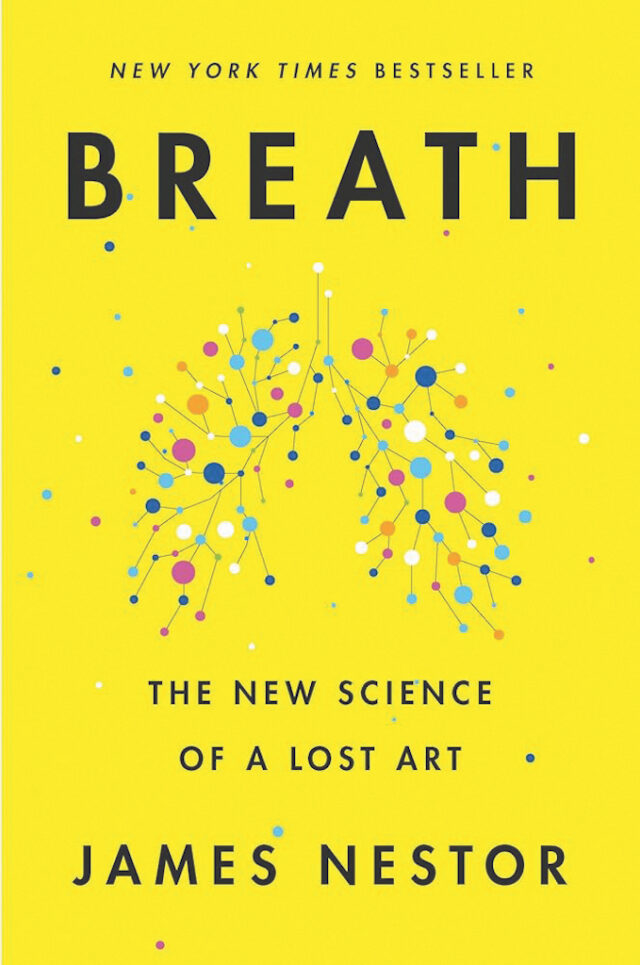
By Cristina Cuomo
CRISTINA CUOMO: In your book Breath: The New Science of a Lost Art, you state there is nothing more beneficial to health than breathing. This is the future, and it’s also the past—when you go back to the beginning of human existence, as you uncovered in your book, the ancients recorded breath and nose breathing as a healing modality. It’s like the solution was given from the get-go, and yet we strayed so far from this gift we were given. How did we lose this art of healing?
JAMES NESTOR: We lost it because we now are completely divorced from the natural environment in which we evolved. If you look at how we interact with nature today, most of us aren’t anywhere near it. We sit inside rooms 90 percent of the time. We wear clothes that are too tight. We are congested from air pollution, and we’ve adopted a diet that does not allow us to chew properly. Without that proper chewing, we don’t have the proper airway help. These are all the wonderful things that industrialization has given us. Once you identify those problems, then you can fix them.
CC: You chronicle the effects of healing through breath work on asthma, anxiety, ADD and psoriasis. My favorite story was the history of the German woman who healed herself from scoliosis. I love that chapter, because my own daughter suffers from that. It was amazing that the woman was able to breathe in a certain way to expand her lungs so much that it straightened her spine, and then go on to help others for decades thereafter and receive an award from the government. She wasn’t even a doctor. She just did this for herself, and that’s where it all began. But it still sounds so unbelievable to people when I tell them that story. Why do you think that is?
JN: We have been taught that the human body is inflexible, and once we have a certain condition, we’re stuck with it our whole life. Not true. I’ve talked to hundreds of people who have either significantly reduced their symptoms of asthma, or completely gotten rid of them by fixing their breathing. I know it sounds impossible, but the science is there. I was talking with Dr. Andrew Weil about scoliosis. He asked: “Why do people get scoliosis?” I thought about it and said, “It’s genetic.” He replied, “No, not really. Why do people get scoliosis?” I said, “I don’t know.” He said, “Yeah, nobody knows.” What he was told—and again, this is not proven, it’s just a hypothesis—is that it’s likely due to a breathing dysfunction early on in life. If you have that breathing dysfunction long enough, it can affect the curvature of your spine. So, if that is one of the causes of scoliosis, how do you fix it? Katharina Schroth in Dresden, Germany, showed how. If you’re willing to go through very rigorous training, you can fix it by learning something called orthopedic breathing. It’s a series of stretches and huge inhales. Right now, if you take an enormous inhale, what happens to your posture when you take that inhale? Your spine straightens. If you continue to do that, you can influence the spine. That’s what the Schroth Method is based on. I did not believe this myself until I looked at the science. I looked at the pictures. I looked at the films, and it’s still being taught at Johns Hopkins and other institutions all around the world.
CC: Is tongue posture the gateway to airway health?
JN: It’s so important. Isn’t this bizarre that we have to teach ourselves how to chew properly, how to swallow properly, how to hold our tongues properly? But that’s what’s happened, because again, we’re so divorced from a natural environment and natural foods and natural living. Myofunctional therapy is a complicated name for something that’s very simple—it just means oral posture. What many kids do when they swallow is push their tongue against their teeth. This is a disaster. It’s going to push your teeth outwards. It can actually change the shape of your face. What you should be doing when you are swallowing is putting the tongue to the roof of the mouth. When you do that, you help expand that upper palate, which helps open up the airway.

CC: Let’s talk about your journey to breathe correctly.
JN: I was physically doing OK: working out, eating the right foods, sleeping eight hours a night, but I wasn’t breathing properly. I didn’t know this, but that was the main reason why I was getting bronchitis and mild pneumonia all the time. I surf a lot—surfing in the winter in San Francisco is not the warmest thing that someone could ever do—and I was having constant respiratory issues, year after year. I would go to a doctor, and they would just give me antibiotics, which I was stupid enough back then to take. They’d work for a little bit, and then bronchitis would come back more severely. Another doctor friend suggested that my breathing was off. I thought it sounded so silly. I was like, “What do you mean my breathing is off? I can breathe. I’m breathing right now.” And she said, “No, I think you’re mouth breathing, and you’re breathing too much. Breathe into your chest.” I took a breath work class, and it completely knocked my socks off. I’m not saying this is proof of anything, but I haven’t had an issue with bronchitis or pneumonia since I learned how to breathe properly. I’ve heard the same story from hundreds of people, so it makes sense if something is causing you to suffer from all these issues and you stop doing the thing that’s causing you suffering, then you’re going to get better. That’s certainly what happened to me.
CC: What are the proven benefits?
JN: I’m a science journalist, so when I first got into this, the first question I had to answer is: Can any of it be measured across large populations? What are the results of those measurements? Has it been scientifically proven? It turns out that it has. Things like straightening the scoliotic spine through proper breathing has been measured and documented. Improving asthma, panic, improving ADHD by changing kids’ sleep habits—all of this is proven. At the back of the book, there are more than 600 scientific references, and all of those are available for free on my website.
CC: Break down some of the breathing practices for us.
JN: There have been breathing practices for thousands of years. Some of the oldest are from ancient India. Pranayama means the cessation of breathing, breath holding. Qigong isn’t much different. It’s less vigorous breathing, more calm and soft, with breath holds. It’s from those two practices primarily that we get so many of the breath work practices that we’re doing today. In the modern world, we can easily measure what these different practices are doing to blood saturation, heart rate variability, sleep. People see significant gains across the board by just adopting better breathing habits.
CC: Tell me about your breathing practice today.
JN: I’d love to say I sit around all day and do these breathing practices. I don’t. I have a stressful life. I live in the modern world just like everybody else. I’m in the middle of writing a new book. I’m constantly traveling, I’m on airplanes and in hotels. But the good news is I have been exposed to enough of these healthy breathing practices and interviewed enough of the experts in the field, so that I always have these techniques at my disposal. I can use them to defuse stress if a password no longer works on a website. I can use them to help go to sleep by breathing more slowly and holding the breath. I can use them before I work out. I can use them surfing to handle bigger hold-downs. You want it to be your default, your habit, so you don’t have to think about it. It’s something that I’ve practiced really hard. Now I’m a much better breather. mrjamesnestor.com





